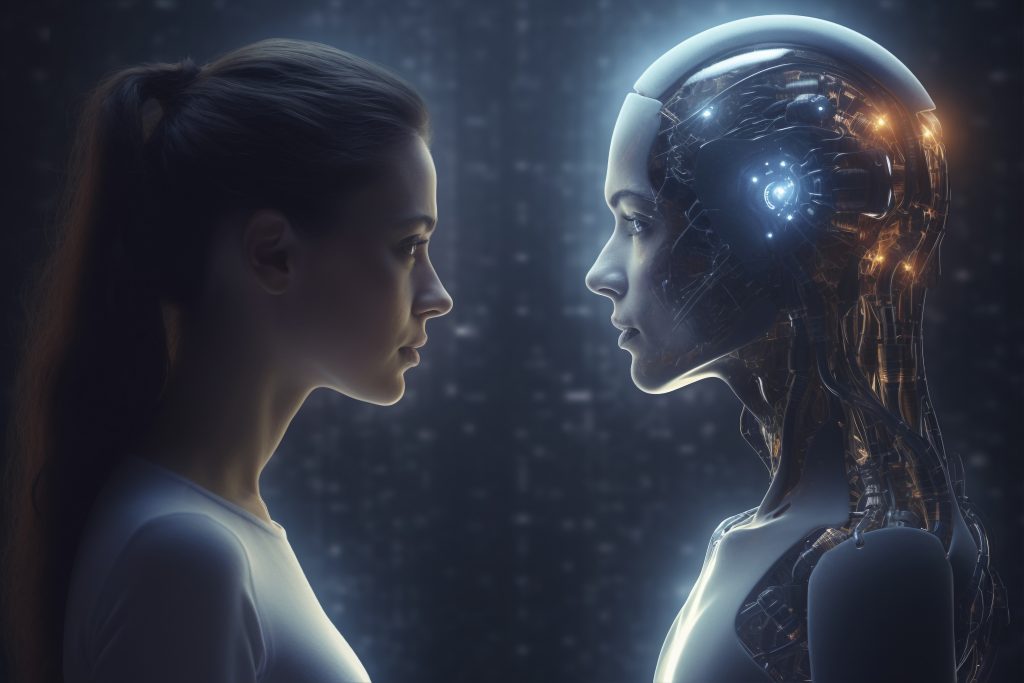In recent years, Artificial Intelligence (AI) has become an increasingly popular topic in both research and pop culture. The showcasing of advanced human-like AI systems in movies such as Ex Machina, Her, and A.I. Artificial Intelligence leaves many people wondering about the proximity to achieving this level of technological advancement. In this article, we will explore the current state of AI technology and compare it to the depictions seen in these films.

Firstly, let’s define what is meant by “human-like” AI. This refers to AI systems that possess abilities similar to those of humans, such as natural language processing, problem solving, decision making, and emotional understanding. While there have been significant strides made in developing AI systems with some of these capabilities, creating a true human-like AI remains elusive.
Companies Leading the Way in AI Development
One area where progress has been made is natural language processing, or the ability for machines to understand and generate human speech. Google’s Assistant, Amazon’s Alexa, and Apple’s Siri all use NLP algorithms to interact with users through voice commands. However, while they can respond to basic requests and questions, their conversational skills remain limited compared to those of actual humans.
Several tech giants are at the forefront of developing cutting-edge AI technologies, including ChatGPT-5, Gemini AI, Nvidia, and AMD. Here’s what makes each company unique in its approach to AI development:
- ChatGPT-5: Developed by OpenAI, ChatGPT-5 is a state-of-the-art conversational agent powered by deep learning techniques. It can generate coherent conversations on a wide range of topics, making it ideal for customer service applications, content generation, and educational tools.
- Gemini AI: Based in Toronto, Canada, Gemini AI specializes in building customized enterprise AI solutions using reinforcement learning algorithms. Its platform allows businesses to optimize their operations through intelligent automation, data analysis, and decision-making support.
- Nvidia: Known primarily for its graphics processors, Nvidia also leads in AI hardware accelerators with its lineup of GPUs specifically designed for neural network computations. These chips enable faster training times for large datasets, enabling researchers to develop more sophisticated AI models.
- AMD: Similar to Nvidia, AMD offers high-performance computing products tailored for AI research, including CPUs and GPUs. By providing cost-effective alternatives to market leaders, AMD helps democratize access to advanced AI technologies
Bridging the gap between current AI and human intelligence
Although we’ve come a long way since the early days of AI research, creating a system with comparable cognitive abilities to humans still requires overcoming numerous technical and theoretical hurdles. Some key areas that need further exploration include:
- Cognitive Abilities: One major issue lies in capturing the full spectrum of human cognitive abilities, such as critical thinking, creativity, curiosity, and emotional intelligence. Although certain aspects have seen improvement, recreating a complete set of cognitive skills in an AI system remains unachievable.
- Ethical Considerations: As mentioned earlier, AI tends to magnify both positive and negative traits inherited from humankind. Consequently, ensuring that AI systems align with societal values and avoid exacerbating harmful behaviors presents a considerable challenge. Moreover, establishing clear guidelines regarding responsibility and accountability becomes crucial as AI plays increasingly vital roles in various sectors.
- Emotional Understanding: An essential component of human intelligence resides in understanding emotions, expressing empathy, and engaging in meaningful relationships. Even though there exist AI systems equipped with emotion detection software, they fall short in genuinely comprehending complex emotional states and responding appropriately in diverse contexts.
So, how far off are we from seeing a real-life version of the intelligent robots depicted in science fiction films? According to experts, it may take several decades before we see any significant breakthroughs in creating human-level AI.

Conclusion
We have made significant progress since early AI experiments, yet achieving the human-like AI seen in films like Ex Machina, Her, and A.I. Artificial Intelligence remains an ongoing challenge with technical, ethical, and philosophical issues. Each step forward brings us closer to merging fantasy with reality.
At AInexxo we work to create advance AI with strong reasoning capabilities to improve technical data search and understanding as well as reducinig time and and improving efficiency in in industrial sectors.
